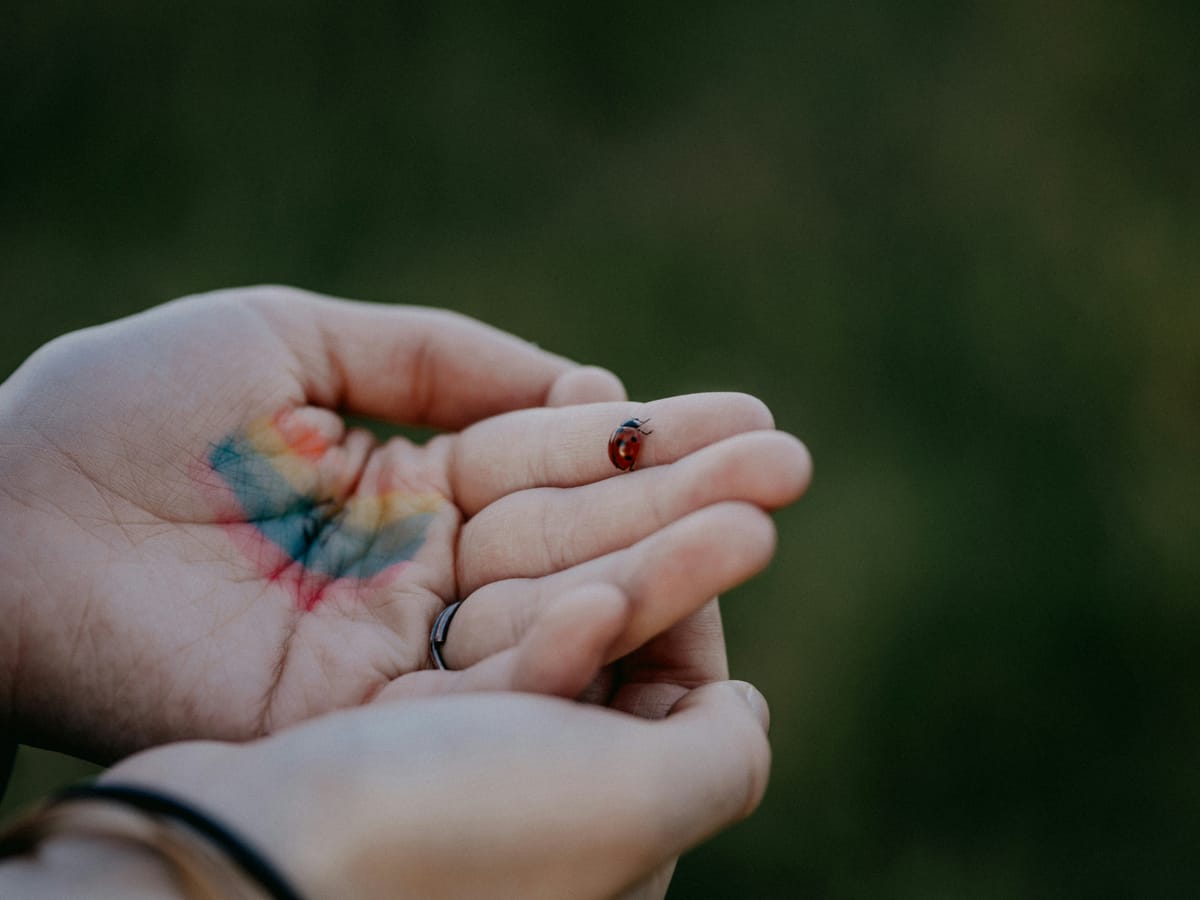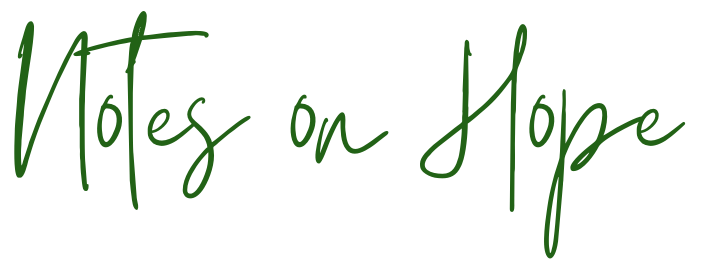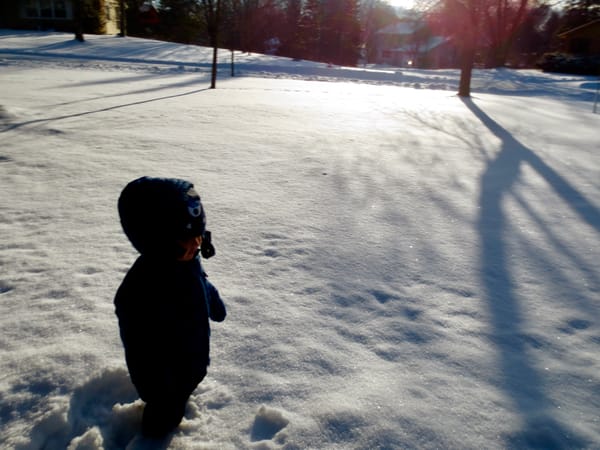What To Do With Your Soft Heart
How to marry empathy with action and avoid excusing harm

“There is a bird and a stone
in your body. Your job is not
to kill the bird with the stone.”
~Victoria Chang
Last week I wrote about the importance of remaining committed to the power of empathy and not surrendering to the notion that the only way to affect change is by appealing to selfishness. I’ve written previously about why empathy is effective (here, here, and here). Empathy is deeply rooted in our neurological and physiological evolution, and as a result it is one of the most powerful mechanisms for shifting perspectives and changing minds. If the real inner workings of empathy were more widely and robustly understood, I believe that it would fundamentally shift the way we relate to one another and the way we go about the work of unraveling harmful systems.
But today I want to focus on a different question, which I also raised in last week’s note and promised to return to. The tension and the question that has been occupying my mind most since writing last week is about how we hold firmly to our own commitment to empathy, while avoiding the risk that our willingness to do so might create a permission structure for further harm.
How do we advocate for a culture defined by care and belonging, instead of by self-interest and dominance, if we are unwilling to extend our own care and understanding beyond our personal comfort zone? And yet, how do we ensure that extending our own empathy in this way, and remaining committed to our belief in the capacity of other people to care, does not morph into an apology or a justification for abuse in the guise of compassion?
We can’t create structures of compassion by refusing to extend compassion ourselves. And yet I understand the impulse to place limits on our own empathy, because there is a very real danger that can arise when empathy is manipulated to excuse or justify harm. This, I think, is a primary factor that draws those who want to build a more caring, just, and equitable society to positions and tactics that sometimes run deeply counter to those very goals. It is difficult, and at times legitimately dangerous, to extend empathy to those upholding harmful structures. And there is an appropriate and righteous fear that overextending empathy can lead to elevating and enabling further harm.
Additionally, we can’t expect those who are directly in harm's way to be responsible for mitigating harm or softening the hearts of those who threaten them directly. Even the filmmaker and activist, Deeyah Khan, who advocates for practices of deep empathy and understanding in the most extreme circumstances, is clear in her stance that it is never the responsibility of victims of individual or systemic cruelty to rehabilitate their own oppressors. She says,
“I want to be clear: I don’t think it’s the responsibility of persecuted people, or abused people, or oppressed people, to have to ‘reform’ extremists. I don’t think it’s their burden.”
I describe the fear that empathy can further enable harm as appropriate and righteous because it is not unfounded. In fact, it is often a strategy of abusive systems to re-position abusers as victims, strategically reversing efforts to protect and empower the vulnerable, by flipping the narrative of sympathy back into the favor of the powerful. This is a real and pervasive phenomenon, and it presents in both the intimate realms of personal abuse and the wider social and political realms of repressive systems and governments. So I am wary, and I understand the wariness of others, to consider any position that seems to advocate for extending empathy without limits. How do we bridge the divide between a commitment to see others as fully human and capable of being moved to care, while refusing to allow our empathy to justify or explain away abusive or destructive actions?

I want to pause here to note that this tension is a very personal one for me. I’m never able to entirely separate my own experience from my professional perspective when considering the complexities of empathy in relation to abusive power dynamics. Though I don’t write or speak publicly about this often and have not in these notes, I have deep experience in my own life with the dynamics of an abusive relationship. The struggle to hold the tension between having compassion for the root causes of abusive behavior—which does often stem from prior victimization—while resisting sacrificing oneself on the pyre of that very compassion is real and is more fraught than many narratives of abuse recognize.
Though there are many dimensions to the mental gymnastics of abusive relationships, in my experience, one of the most challenging is the way in which compassion for the one causing harm—which is not always misguided and is often rooted in real understanding—can create a new set of victims. This is not only true within the relationship. The same tension often establishes a structure, beyond the intimate relationship itself, in which others perpetuate harm, as their attempts to understand how the harm developed morph into justifications.
I share this to acknowledge that these are not easy paths to navigate, either on an individual or collective social and political level. As much as we long for bright lines that clearly define zones of care and zones of resistance, these distinctions are not always so obvious, and they tend to bleed into one another. I also share this to make it very clear that, while I believe in the power of empathy, it is also imperative that we balance our practice of empathy with a commitment to act on behalf of those who are most vulnerable and guard against the temptation to excuse harm in our attempts to understand its root causes.
The same dynamics that play out in personal relationships also play out at scale. The web of our intimate connections is vast, and our individual lives weave together to form the social fabric in which we all live. It is important to understand the dynamics of care and power in intimate contexts, because the threads that we spin between one another ultimately connect us all, and how we understand these connections determines whether they form supportive communities or repressive systems.
So how do we do this then? How do we operationalize our empathy and commit to extending it widely and to believing in the ability of others to do the same, while also avoiding the temptation to excuse abuse, and insisting on accountability for harm?
These are questions I’ve struggled with significantly in my own life, and I believe that they are questions that are at the root of many of the larger challenges we are facing on a national and global scale today. How do we ensure that the web of threads that should hold us together in common care does not instead wind its way around those most in need of safety and protection and become a force for strangulation?
As we navigate week after week that feels oppressively dominated by acts of extreme power and lack of compassion, I’d like to offer a few guideposts for navigating the tension inherent in remaining committed to empathy and refusing to harden our own hearts, while also resisting the trap of allowing compassion to excuse harm or dampen our courage in speaking out against abuse in its most intimate and its most far-reaching forms.
A Few Guideposts for Balancing Empathy with Advocacy
- Compassion is not permission.
A willingness to understand and even feel compassion for the root causes of someone else’s behavior does not require us to excuse the behavior itself. We can understand the complex human experiences that sew the seeds for harm and even cruelty without accepting the cruelty as inevitable or excusable. As a teacher and a parent, I believe that understanding and having compassion for the underlying causes of any behavior is a critical step in ending harmful cycles. We have to understand how people arrive at inflicting harm if we are to do a better job of preventing harm in the future. However, we can hold this understanding while also requiring accountability. Understanding behavior and expecting responsibility are not mutually exclusive. - Future potential for good doesn’t negate present harm.
Remaining committed to the idea that others are capable of empathy, of being moved, and of growing into compassion does not serve as a carte blanche to excuse past or present behavior that doesn’t reflect care. Retaining a belief in someone’s potential doesn’t negate the reality of the present. We don’t have to abandon our belief in the potential for empathy and the possibility of individual or collective change in order to honestly name harm when it occurs. And if we are on the receiving end of harm, we don’t have an obligation to stick around and wait for change. - Some people won’t come around, and that’s okay.
Empathy is powerful. Neurological research has shown that we are so deeply moved by other people’s stories that they register on the same biological systems that are most critical to our own survival. We literally feel other people’s experiences as our own in our own bodies and brains. This runs deep in our evolutionary history; the neural and physical regions that are activated when we are affected by another person’s story are some of the oldest systems in our development as a species. Empathy is fundamental to what makes us human. But this does not mean that everyone will be moved, or that everyone will alter their views or their actions based on our stories. Individual context and life experience will make it harder for some people to be moved than others. This is a reality, and it’s okay. It does not mean that empathy isn’t effective, and it doesn’t mean that large scale change is impossible. Remember that a relatively small percentage of people can change the world in powerful ways. Research shows us this as well. We can create a more caring world without changing every single heart. - Always prioritize the most vulnerable.
This is perhaps the most important principle in ensuring that our commitment to empathy does not become a structure for upholding harm. While I believe that it is important to retain a faith in other people’s ability to care and to continue to try to expand the reach of compassion by telling our stories, the reality of daily life also demands that we constantly transition from understanding to action. In doing so, it is imperative that we prioritize the most vulnerable as we move toward action.
The strategic use of victim narratives by those in power easily becomes muddied with arguments for empathy and morphs into a justification for excusing and perpetuating dynamics of harm and abuse. Fear and an instinctual desire to remain close to power also often confuse our ability to prioritize the vulnerable. But moments that require action—which include speaking up for other people, advocating for policy change, protesting, voting, and many other concrete steps—always demand that we begin by asking ourselves, “Who is most vulnerable here?”
Just as we can’t allow our fear to impede our ability to protect each other, we can’t allow compassion, even with the best of intentions, to obscure our obligation to center those with the least power in our choices. After all, if the goal of working to bring other people closer to empathy is to create a more caring world, we can’t lose sight of our obligation to enact care in the world as it is today. Doing so requires that, when a choice is necessary, we choose to protect those in the most need of care, not those with the most power.
If we want a more caring and compassionate world, we have to be willing to keep our hearts open, even when it’s hard. We have to continue to strive to understand each other better and to create the contexts and experiences that invite connection. And, even as we remain dedicated to better understanding one another, we also have to keep our eyes open for vulnerability and be willing to stand up to those perpetrating harm. The commitment to seek empathy and the commitment to stand against harm can feel in conflict at times. But I think that learning to navigate this conflict will be critical to our ability to move through this fraught period toward something better, not darker and more cruel. Understanding and having compassion for the root causes of harm can help us mitigate its perpetuation in the future, even while our willingness to be clear-eyed about the reality of current harm can propel us to protect the vulnerable with strength and courage in the present.
Wishing you the compassion to seek understanding and the courage to enact care,
Alicia
A few resources I found helpful & hopeful this week…
More on Empathy
In connection to the theme of this week’s note, I recommend digging deeply into the work of Deeyah Khan, who is cited above. For a quick peak into her work, start with her Ted Talk or with this interview on the origins of her work. For a more thorough immersion, explore her documentaries.
An Important Reminder of What Courage Looks Like
If you have not watched Representative Al Green’s full response to his congressional censure, I strongly recommend spending the time to listen and sit with his message. He concludes by directing his final remarks to the President. He says, “You are a Goliath. But, Mr. President, there are Davids among us. Your incivility can no longer be tolerated. It has to be met with righteous indignation and righteous incivility.” Listen to better understand what it means to be a “David.”
Giving Children a Voice
Providing children with the opportunity and the tools to express their experiences and their feelings, particularly amidst trauma, is one of the most powerful gifts we can offer. Ukrainian poet, Ilya Kaminsky, has created a beautiful forum for this work in Odessa, Ukraine through the kids poetry studio, Poems Not Bombs. Have a look, and support them if you can.
If you think someone else in your life might need some hope, please share. It’s always easier to hold onto hope when we’re not doing it alone.





